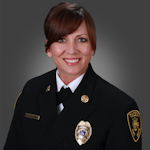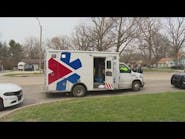We all know them: The disconnected, underserved, vulnerable members of the community who over-rely on 9-1-1 emergency resources. The ones who are so common to the system that we greet them by their first name and know before we arrive that our quick-fix that day will suffice little more than as a band-aid for their often deep and multifaceted issues.
People such as: Bill, who is a 62-year-old veteran who calls daily, complaining of severe back pain and asking for a ride to the emergency room for pain medication; and Betty, who is a 90-year-old woman who lives alone, suffers from extreme bouts of nausea and seems to lose weight by the week; and Linda, who is 40 years old and “feels sick” and travels via ambulance to the hospital every few days but fails to follow up with discharge directions and further testing, choosing instead to stay home with her trusty canine companion, Max.
The stories are heartbreaking. They call 9-1-1, because it’s easy, and kind, trusted professionals arrive within minutes. However, with limited options, crews who are on scene perform little more than an assessment and offer an ambulance transport to the hospital. The crews return to the station with heavy hearts, knowing that they fixed nothing and that by next shift they will respond again.
Across the nation, the call-load for this population is astronomical, with significant downstream effects on system reliability, response times, emergency room overcrowding, increased medical costs and responder compassion-fatigue. Tucson knew that it no longer could sit back and wait for others to solve this problem. Instead, it was acknowledged that EMS operates at the intersection of health care, public health and public safety, and, as such, adaptation to ever-changing, overlapping roles and responsibility was required.
Frustration increased daily
Like many, the Tucson Fire Department (TFD) documented a sharp, decades-long increase in calls for EMS response, which surpassed 90 percent of total call volume and clearly defined this area as one where adjustments to service delivery would have significant effect on myriad stakeholders. Unfortunately, the continued misalignment between the capabilities of the average EMS system and the demand from constituents for nonemergent needs was problematic.
The idea that emergency response personnel regularly respond to nonemergencies is a taboo subject. “We’re fast. We’re lights and sirens. We’re highly trained lifesavers. We don’t do social service.” However, data said otherwise. TFD indeed responded to social service demands, albeit in a rather traditional and inefficient manner.
To deeply understand the identity struggle and overall feeling of scope creep that’s associated with response to low-level incidents, TFD held a series of internal stakeholder discussions. Although most agreed that the root-cause of 9-1-1 system abuse centers on gaps that exist in reliable social services, all were quick to share their unwillingness to be the ones to fill that gap. This realization presented as the first barrier to a meaningful resolution and prompted work to start internally. This included education and training of personnel on the little-known community services that are available to citizens.
As a few easy-win success stories made their way through the rumor mill, the troops saw the value in this “expanded scope,” and buy-in increased.
The department gathered and presented data that spoke for themselves and adamantly were confirmed via employee surveys. Thousands of nonemergent calls came from frequent system users, and it had a negative effect on system reliability, the budget, personnel and the community. In 2014, a group of 50 frequent users accounted for 1,389 calls in a 12-month period. Few if any interventions were performed on these incidents. Knowing that fire trucks, ambulances and personnel couldn’t continue to be thrown at incidents where no EMS interventions were needed, the fire chief was provided with the proposal of “the next frontier of fire-based EMS.”
As sound as the proposal might have been, money—or, rather, the lack thereof—quickly emerged as the second barrier. Supporters of the concept needed to convince the bosses that a nontraditional approach to the frequent-user issue would save money—and, as a bonus, had great potential to improve employee morale. With strict messaging on the need to continually monitor the positive and negative implications, the chief gave the go-ahead for a six-month pilot program.
In August of 2015, with half of a full-time employee dedicated to the project, TFD’s Tucson Collaborative Community Care program, or TC-3, was created. The initial direction was two-fold, but simple: Find the people where they are, find the community resources that are available to help them and solve their problem.
New thinking
Creative solutions were necessary, so being bound by the restrictions that created a long-standing siloed approach to whole-person care wouldn’t work.
Capt. Mike Bishop set to work immediately, scheduling quarterly meetings with representatives from across the social-service community. He made home visits to the study group—10 frequent 9-1-1 users—and spent hours with them to examine their environment, their struggles, their support systems (or lack of), their limitations and their reasons for over-use of the 9-1-1 system. Most fell into one of three categories: complex medical (27 percent), aging (40 percent), and behavioral health and substance abuse (33 percent).
With their permission, individuals were connected to community resources that were best suited to meet their needs. In one case, a regular delivery of juice boxes was all it took for a well-known daily user to drop out of the 9-1-1 cycle. However, many involved significant and long-standing issues, and the complexities of the medical and insurance systems were far too difficult to navigate. Approvals, referrals, appointments, prescriptions and transportation arrangements challenge all of us. When compounded by mental health issues or a general lack of understanding, they can be insurmountable.
As data from the first study group were compiled and a significant decrease in use of 9-1-1 services was proved, a dedicated, light-duty paramedic was added to the effort. TC-3’s paramedic, Sue Rizzi (now retired), captured data on client demographics, geographical distribution, predominant social issues, barriers to care, reduction of first-response staff hours and out-of-service times. She identified the resulting effect on service delivery, operating costs and employee morale.
As political momentum was gained, all agreed that a public entity that had no motive of monetary gain would remain best suited to lead the collaborative effort.
Small, unanticipated barriers popped up along the way, but that led to learning and solutions. For example, the team was careful to refer to and to treat intakes as “clients” rather than patients. This dissolved the issue of patient abandonment that’s commonly referenced in EMS care guidelines.
When faced with significant information-sharing barriers, such as HIPAA law, a “release of information” document was created. Approved by the city’s legal department, the document is signed by clients to allow their protected health information to be accessed. Intakes were formalized and tracked. HIPAA-compliant business agreements with social service partners were created.
Soon, leadership granted TC-3 permanent status and allowed the team to add an additional uniformed member and a civilian position to the team.
Community Outreach Coordinator Natalie Becker continues to build the pool of community partners—which now approaches triple digits—and to collaborate with them to become experts at understanding their services, hours and requirements.
Data results from the program continued to impress, particularly when the team intervened early. TC-3 attracted the attention of insurance companies, philanthropic groups and nonprofits. In 2019, with the support and approval of the city’s mayor and council, a partnership and intergovernmental agreement was formalized with Tucson Medical Center HealthCare (TMCH). As lead partner, TMCH provides a grant manager, a registered nurse and an administrative assistant. TMCH also provides client tracking software, iPads and vehicles.
How TC-3 works
With the click of a button and a signature of consent, responding crews utilize an electronic patient care reporting system to begin the enrollment process for an at-risk individual. A notification immediately is sent to the TC-3 team, who run a full query on all previous visits that were made to the individual, looking for patterns, needs and outcomes. Based on severity and urgency, the individual is placed into a queue for a scheduled phone consult and/or in-home visit with a TC-3 navigator. An unhurried, in-home visit allows specially trained personnel to better understand the individual’s specific and multiple needs and limitations through conversation and examination of his/her environment and social determinants. A thorough assessment is conducted, and needs are matched to the services and qualifiers of local community partners. A navigator makes phone calls, schedules appointments, arranges for in-home healthcare visits, food delivery and pet care, and checks back regularly to ensure that the individual’s needs are being addressed and that he/she remains compliant and engaged with the team of resources.
TC-3’s effect is vast and meaningful. The number of 9-1-1 responses to TC-3 clients declined dramatically, with some completely removed from the 9-1-1 cycle. All clients show improvement, and the vast majority report that their quality of life improved.
It turns out that Bill wasn’t a drug-seeker. He slept on a 2-inch foam pad that was laid across concrete blocks. The head of his “bed” was propped up on milk crates, because his doctor told him that elevating his head would help his breathing. TC-3 secured a mattress, scheduled regular doctors’ visits with pre-arranged transportation and continued to check in regularly with Bill. As a result, he hasn’t called 9-1-1 nor has he needed pain medications for months.
TC-3 learned that Betty was prescribed a daily mix of medications for her varied health issues; many of them were labeled “take with food.” Although she reported to her doctor that she had food and a means to cook it, the truth was heartbreaking; she soaked croutons in water and heated them on the hot plate of her coffeemaker. Once she was connected to regularly delivered meals and in-home nurse visits, Betty’s severe problem with nausea was resolved.
Sweet Linda? She was battling a then-undiagnosed and aggressive form of cancer. TC-3 paved the way for her to receive hospice care. The team’s pet-service partners helped to get her beloved Max the care and clearance that he needed to allow him to be with her through her final days.
“My work with TC-3 was the most rewarding of my career in EMS,” Rizzi says. “I am forever changed.”
Impressive
TC-3 continues to grow. The team, now supervised by Capt. Chris Don, continually heeds the importance of remaining agile. The COVID-19 pandemic has been a great reminder of that fact. As the state went on sabbatical, the TC-3 team shifted to phone consults and to the delivery of basic nutritional and sanitizing essentials by TC-3 personnel who were suited in PPE. With some in-take visits on hold, Don develops and formalizes meaningful mental-health training curriculum for navigators.
The continued community-wide efforts of TC-3 and the program’s myriad partners allow the team to make great progress toward eliminating a fragmented system of care. The work helps to ensure a healthy and efficient EMS system, one that allows each patient to be directed to the most appropriate setting for his/her condition. As such, Tucson’s emergency response system remains robust and reliable. Overall patient costs dropped, the most vulnerable community members feel cared for and crews describe TC-3 as “the best thing that has ever happened to TFD.”
Clearly, clients and personnel feel heard and supported, and the call-load for nonemergent EMS issues is on a steady and significant decline.

Sharon McDonough
Sharon McDonough is the director of Public Safety Communications Department in Tucson, AZ, which houses the city's 9-1-1 center. Previously, she was deputy chief over the EMS Division for the Tucson, AZ, Fire Department (TFD). She was hired by TFD in 1990, progressing through the ranks of firefighter, paramedic, captain, battalion chief and deputy chief and served a two-year appointment as interim operations assistant chief. McDonough has managed fire operations, medical administration, safety and the 9-1-1 communications center, developing and implementing innovative solutions to long-standing and trending industry issues.






